Key takeaways:
- Understanding the underwater environment is essential for effective reef photography, with factors like lighting and visibility playing critical roles.
- Marine environments, particularly coral reefs, are vital for biodiversity, offering economic benefits and promoting mental well-being.
- Essential tools for reef photography include a sturdy underwater camera, lighting aids, and a quality snorkel mask.
- Mastering techniques such as finding the right angle, shooting during golden hours, and applying composition rules can significantly enhance photography outcomes.
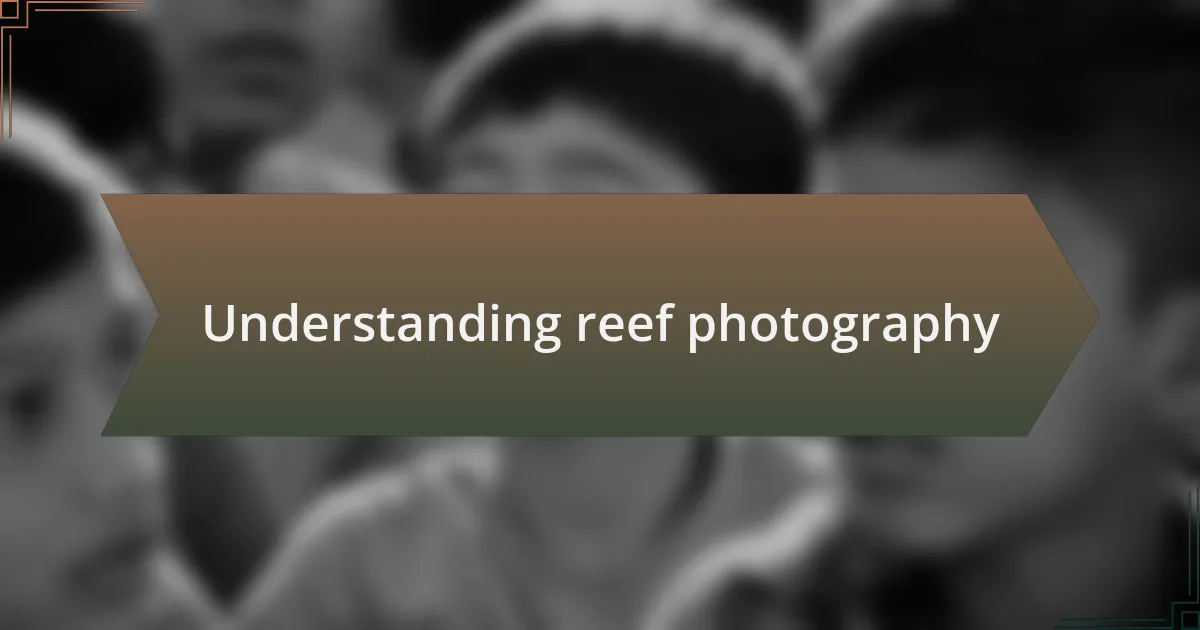
Understanding reef photography
Reef photography is a fascinating blend of art and science, capturing the vibrant life beneath the waves. I remember my first dive, marveling at the kaleidoscope of colors. The coral formations and playful fish seemed almost like a living painting, inviting me to capture their beauty through my lens. How could I resist?
Understanding the underwater environment is crucial for effective reef photography. The challenges of lighting and visibility can feel intimidating. On one of my dives, poor visibility turned what I thought would be a stunning scene into a muddled image. It was a learning moment for me—realizing that sometimes the best shots come when you adapt to the conditions rather than fighting against them.
Moreover, each reef tells a unique story. As I positioned my camera to focus on a shy clownfish peeking out from its anemone home, I felt a connection that was almost palpable. Isn’t it incredible how a simple photograph can convey the intricate relationships and delicate balance of life in these underwater ecosystems? It reminds us of our responsibility to protect these natural wonders.
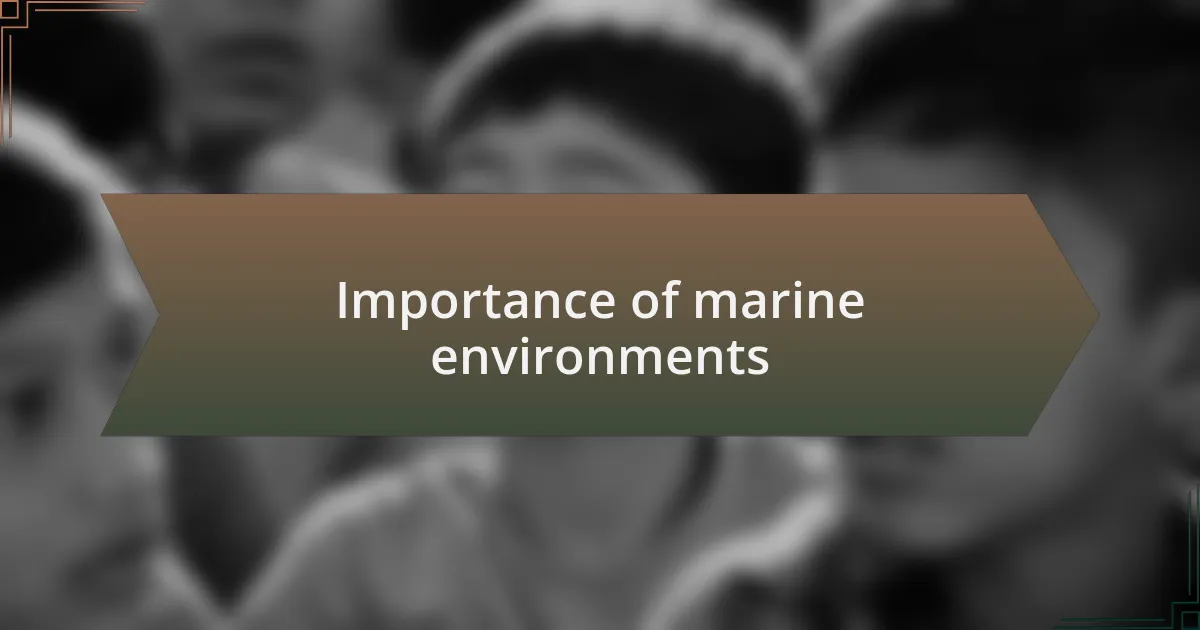
Importance of marine environments
Marine environments are essential for maintaining the health of our planet. I’ve seen firsthand how coral reefs act as vital ecosystems, supporting countless species and providing a habitat for marine life. One day while snorkeling, I stumbled upon a vibrant reef bustling with activity. It struck me how these underwater gardens are not just beautiful but are the foundation of the ocean’s biodiversity.
The importance of these environments extends beyond ecological health; they also play a key role in our well-being. I often reflect on how my time spent near the ocean rejuvenates my spirit. The soothing sounds of waves and the captivating marine life remind me that these habitats are beneficial for mental health, offering a chance to reconnect with nature and ourselves. How often do we take the time to appreciate that connection?
Furthermore, healthy marine ecosystems significantly impact our economy. As I spoke with local fishermen, their tales highlighted how declining fish populations directly affect their livelihoods. It was a stark reminder that preserving our reefs is not just about conservation; it’s about ensuring sustainable futures for communities that rely on the ocean for their way of life. Isn’t it crucial that we work to protect these incredible places for both nature and humanity?
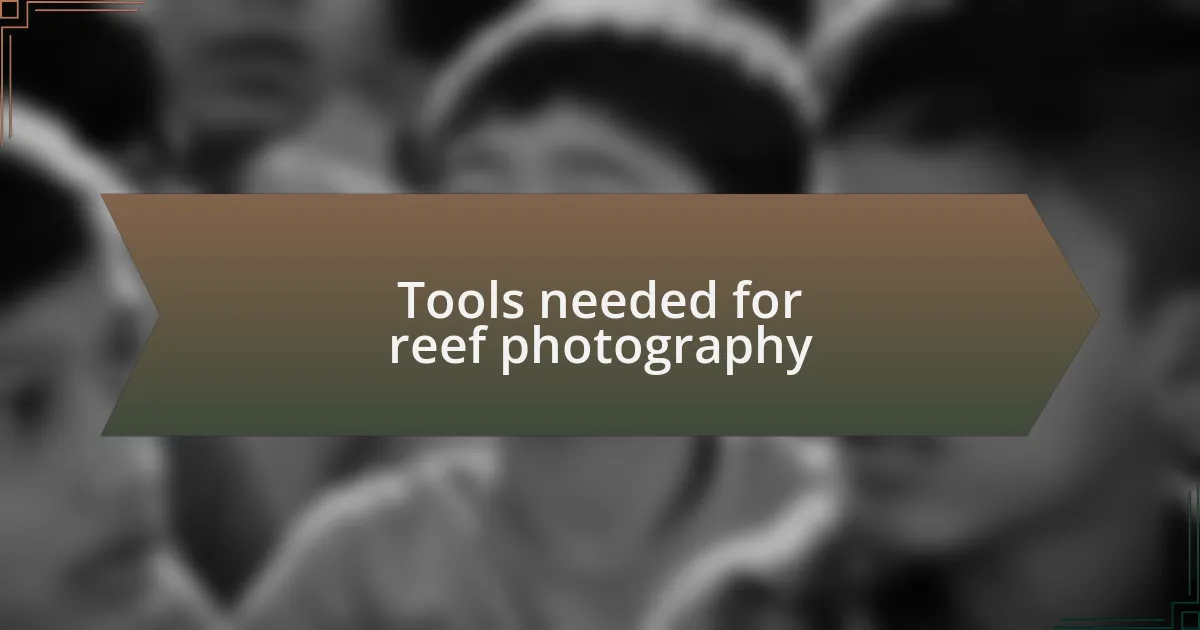
Tools needed for reef photography
When it comes to reef photography, having the right tools can make all the difference. A sturdy underwater camera by itself isn’t enough; I always rely on a housing unit to protect my gear from salty water and pressure. During my last dive, I remember feeling a wave of relief knowing my camera was safe, allowing me to focus on capturing those breathtaking coral formations.
Lighting is another crucial aspect. I’ve often found that natural light can be limiting, especially in deeper waters. I’ve invested in a couple of underwater strobes, which transformed my photos by illuminating the vibrant colors of marine life. It was exhilarating to see how the right lighting changed everything—what once appeared dull suddenly burst with life and detail.
Lastly, I can’t stress the importance of a quality snorkel mask with a wide view lens. I’ve personally experienced the difference in how much more immersive the photography experience becomes. Being able to see everything clearly while exploring a reef not only enhances your shots but enriches your overall adventure. What gear do you find essential for your own adventures? It’s fascinating to discover how everyone has their unique set of preferences.
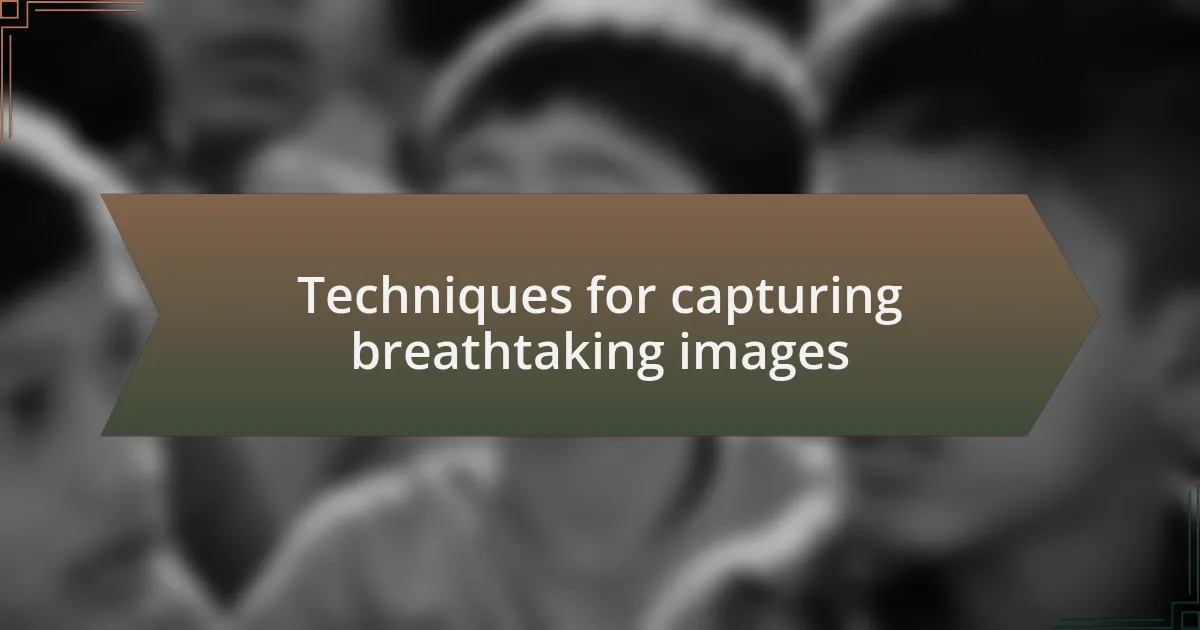
Techniques for capturing breathtaking images
Capturing breathtaking images in reef photography involves more than just having the right gear; it’s about mastering a few key techniques. One technique I often rely on is finding the right angle. During a recent dive, I experimented with low-angle shots, which provided an incredible perspective of the reef. It made me realize how a simple shift in my approach could bring the underwater world to life, drawing attention to the intricate details that often go unnoticed.
Another technique that has served me well is diving during the golden hours—just after sunrise or before sunset. The soft, warm light during these times can cast mesmerizing hues across the water, enhancing the colors of the coral and fish. I remember a particular photo I captured at dawn, where the sunlight filtered through the water, creating a magical ambiance. Have you ever noticed how the world looks different at these times? It certainly inspires me to dive more often during those magical hours.
Lastly, composition plays a significant role in making your photographs stand out. I always try to incorporate the rule of thirds, placing the main subject off-center to create a more engaging image. On one dive, framing a school of fish against a vibrant coral backdrop led to some of my favorite shots. It taught me that being intentional with the composition can elevate a simple photo into a captivating story. How do you approach composition in your photography? It’s these little details that make all the difference, don’t you think?

Challenges faced in reef photography
The underwater environment presents unique challenges that can make reef photography quite demanding. For instance, visibility can be unpredictable, often impacted by weather and water currents. I vividly recall a dive where I struggled to capture anything due to murky waters; it was disheartening to return with little to show. Have you ever faced an experience where the conditions simply weren’t in your favor? It’s those moments that teach us resilience.
Another hurdle comes from the marine life itself. Many sea creatures are skittish and retreat at the slightest disturbance, making it crucial to remain calm and patient. During one dive, I attempted to photograph a shy octopus, but it quickly tucked itself into a crevice the moment I approached. It made me realize how much respect we must have for their space; each encounter is a balance of stealth and timing. How do you prepare to capture those fleeting moments?
Technical aspects also play a role in the challenges of reef photography. Maintaining proper settings in changing light conditions can be tricky, especially when dealing with reflective surfaces like water. I remember fumbling with my camera settings as sunlight flickered through the waves, trying desperately to avoid overexposure. It was a tough lesson—constant practice and familiarity with your equipment are essential. Don’t you think it’s the little setbacks that often lead to the biggest improvements?
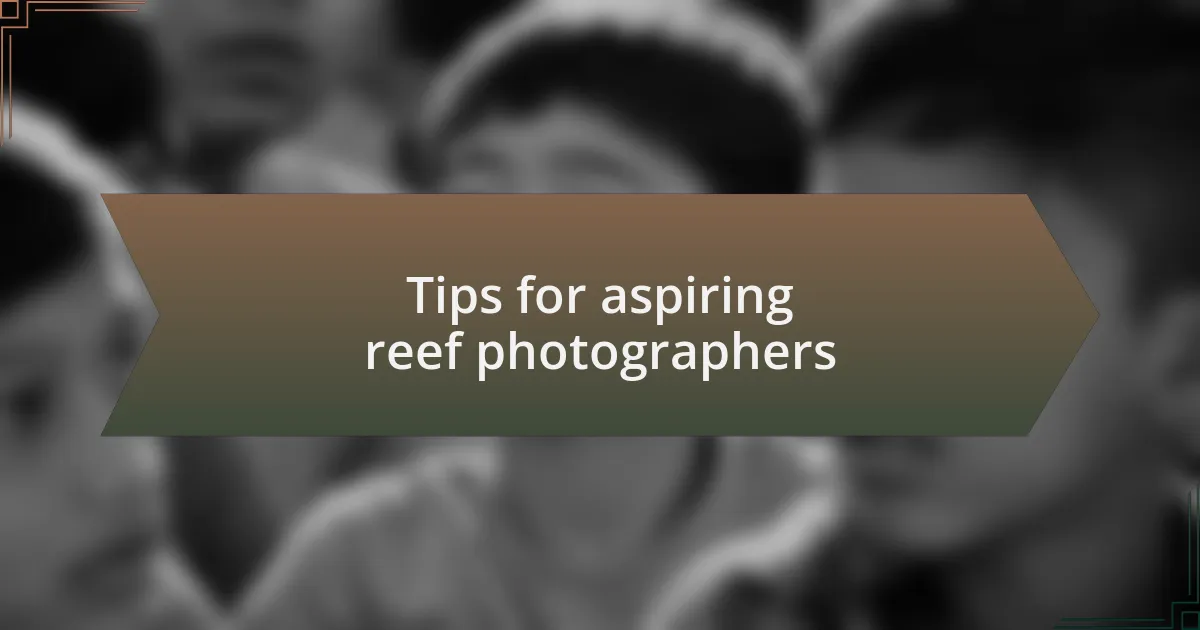
Tips for aspiring reef photographers
When starting your journey in reef photography, I suggest investing in the right equipment. A good underwater camera can be a game-changer, but it’s not just about the gear; it’s about knowing how to use it. I once spent weeks learning my camera’s manual, and it transformed my shooting experience. Have you ever felt overwhelmed by all the settings? Familiarity makes capturing those stunning moments much easier.
Another key tip is to pay attention to the time of day. Early mornings and late afternoons often provide the best lighting for underwater scenes, creating a magical quality that can elevate your photos. I’ve had days where I arrived at a dive site when the sun was just right, and the colors of the reef came alive like I had never seen before. Don’t you just love when everything aligns perfectly?
Lastly, practice mindfulness while in the water. I learned the importance of slowing down and observing my surroundings rather than rushing to take pictures. During one particular dive, I took the time to watch a group of clownfish interact and found the perfect moment to press the shutter. It was a beautiful reminder that photography is not just about capturing images; it’s about capturing feelings. Have you taken the time to truly experience what you’re photographing?